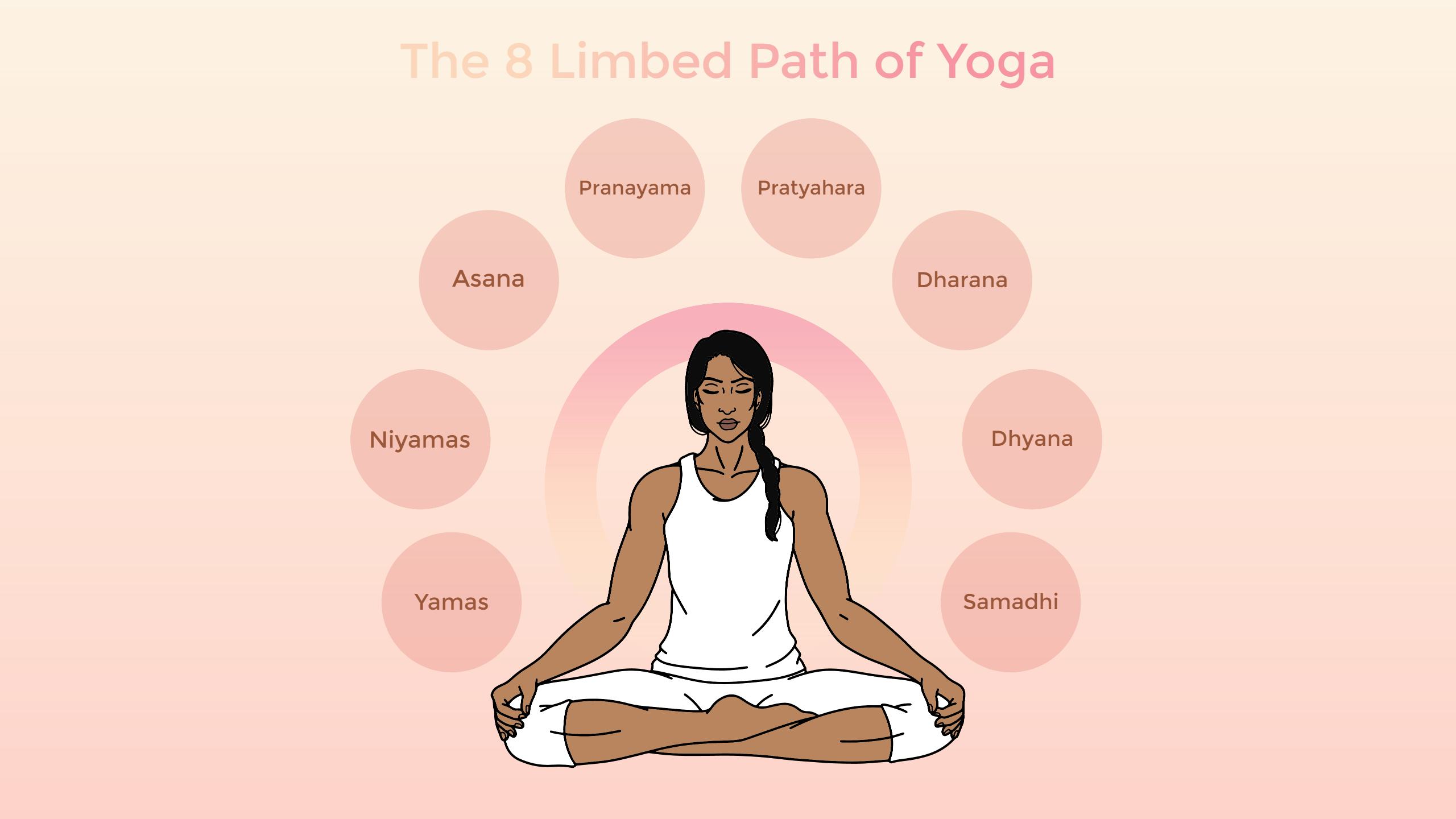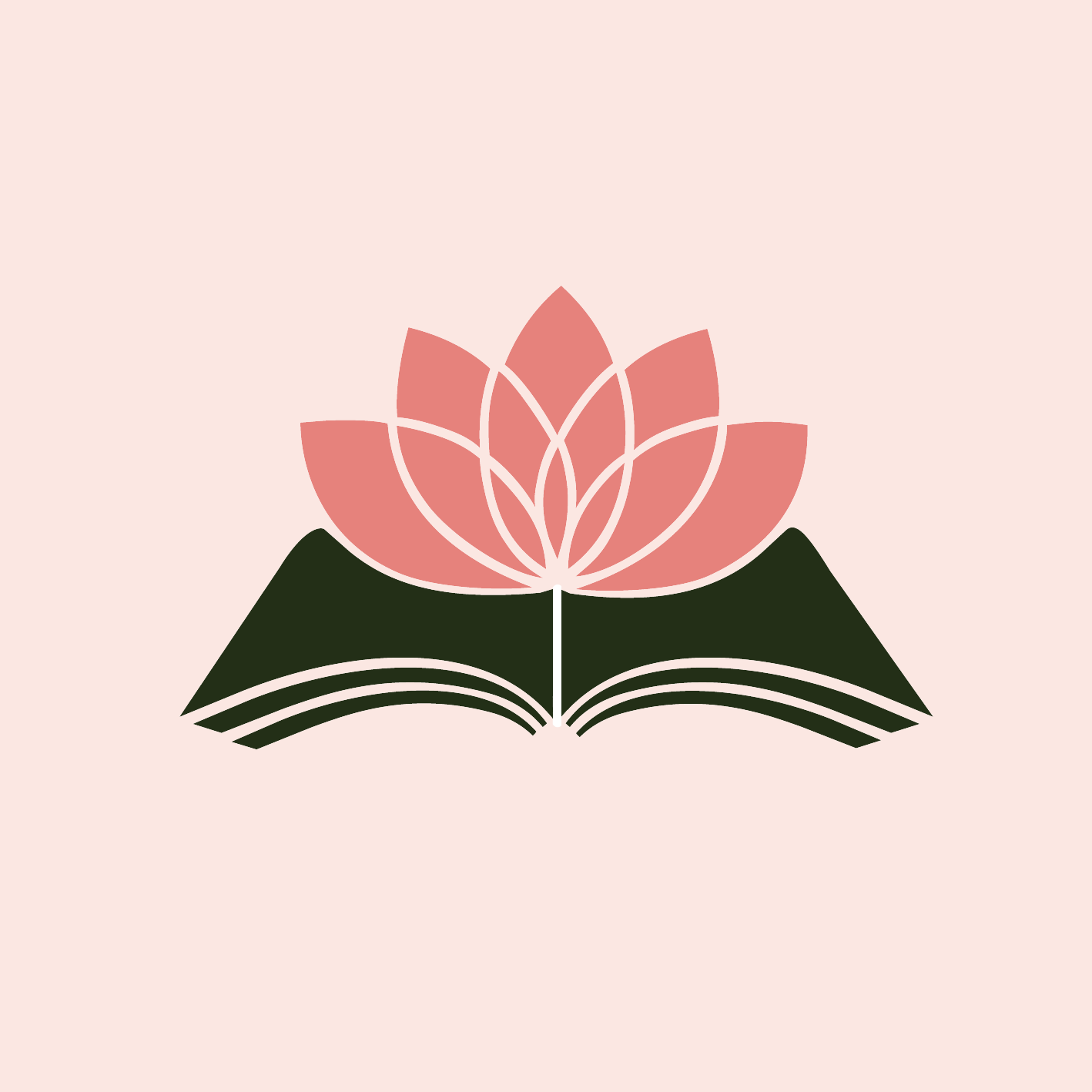The 8 Limbed Path of Yoga: A List of Study Resources
In this article we will provide more information on the 8 limbs of yoga as well as links to further resources.

A quick summary...
Aṣṭāṅga: THE EIGHT LIMBS OF YOGA
Yoga is not just postures (āsana) and breath work (prāṇāyāma); they are but 2 of 8 limbs of the yogic path. For brevity sake, we will give a succinct translation/definition. We urge you to research all of the limbs independently, and use many different resources. There are many translations and interpretations of Sanskrit terms (all classical yogic texts were written in Sanskrit or Pali), and therefore you may derive a slightly different meaning if you read another translation-and it may speak to you more clearly. The interpretations below are mainly from the Sri T. Krishnamacharya lineage-from his and his students’ writings. Please understand there is no right or wrong, just different interpretations.
1. yamas- 5 Restraints. Ethical precepts that effect relations with others.
2. niyamas- 5 Observances. Habits for healthy living, personal discipline and spiritual enlightenment.
3. āsana- Postures. The physical practice.
4. prāṇāyāma- Breath control, or working with the breath.
5. pratyāhāra- The conscious withdrawal from agitation of the senses.
6. dhāraṇā- Concentration.
7. dhyāna- Meditation.
8. samādhi- Oneness, unity with all.
In summary, the eight limbs are categorized in 3 different tiers. The first tier is made of the Yamas and Niyamas. The Yamas are internal or personal restraints, and the Niyamas are social restraints. The second tier consists of āsana, prāṇāyāma, and pratyāhāra. They are tools for individual development of the body and the mind. The third tier is comprised of dhāraṇā, dhyāna, and samādhi. This tier is the culmination of our discipline and effort-the fruits of our labor and our spiritual awakening.
Continue reading below for further information and links to more resources.

The Eight Limbs of Yoga are a guiding philosophy that informs many forms and styles of yoga practice. The eight limbs of yoga is attributed to Patanjali's Yoga Sutras, a text that is believed to have been written between 400 BCE and 200 CE. The Yoga Sutras provide a comprehensive philosophical framework for the practice of yoga, and the eight limbs serve as a roadmap for spiritual growth and self-realization.
Some forms of yoga that explicitly reference the Eight Limbs in their teachings and practices include:
- Raja Yoga: This is a contemplative form of yoga that focuses on meditation and the cultivation of inner awareness.
- Karma Yoga: This is a form of yoga that emphasizes selfless service and the performance of actions without attachment to the fruits of one's labor.
- Jnana Yoga: This is a form of yoga that emphasizes the development of knowledge and wisdom as a means of achieving liberation.
These are just a few examples of the many forms of yoga that draw from the philosophy of the Eight Limbs. In general, any form of yoga that emphasizes self-discipline, ethical behavior, and spiritual growth can be seen as being influenced by the Eight Limbs. (see article on the different forms of Yoga)
In the Yoga Sutras, Patanjali outlines the eight limbs as a sequential path, beginning with the ethical and moral principles of Yama and Niyama, and progressing through physical postures (āsana), breath control (prāṇāyāma), sense withdrawal (pratyāhāra), concentration (dhāraṇā), meditation (dhyāna), and finally, the state of pure consciousness known as samādhi.
The eight limbs of yoga have been widely adopted and adapted in various forms of yoga throughout history and continue to be an integral part of the practice for many yogis today. They serve as a guide for holistic and integrative growth, encompassing not just the physical aspects of yoga, but also the ethical, mental, and spiritual dimensions of human experience.
YTL Book Recommendations on the Eight Limbs of Yoga:
- A Seeker's Guide to the Yoga Sutras: Modern Reflections on the Ancient Journey
by Ram Bhakt - The Eight Limbs of Yoga: A Handbook for Living Yoga Philosophy
by Dr. Stuart Ray Sarbacker
Online articles
- An article with a decolonization of Yoga perspective by Meesha Sharma
https://www.healthline.com/health/fitness/the-8-limbs-of-yoga - The Role of the Eight Limbs in Contemporary Yoga Practice by Jivana Heyman
https://yogainternational.com/article/view/the-role-of-the-eight-limbs-in-contemporary-yoga-practice/ - Another viewpoint from a Tantric practitioner and Sanskrit Scholar:
The Eight Limbs of Yoga? Think again. By Hareesh (Christopher Wallis)
https://hareesh.org/blog/2016/2/12/the-eight-limbs-of-yoga-think-again
A Research Article focused on perceptions of the Eight Limbs
- Interesting short research project - The 8-limbs of Yoga:
Elements of yogic practice: Perceptions of students in healthcare programs
https://www.ncbi.nlm.nih.gov/pmc/articles/PMC4959322/
A Note: One confusing aspect of searching for good articles and resources for the study of Aṣṭāṅga (the Eight Limbs of Yoga Philosophy) is that a School of Yoga, founded by Sri Pattabhi Jois was named Ashtanga, and many people do not know the traditional roots of that name.
K. Pattabhi Jois (1915–2009) developed a flowing style of yoga known as Ashtanga vinyasa yoga. In 1948, Jois established the Ashtanga Yoga Research Institute in Mysore, India.
It is important to YTL that we elevate the voices of the women who have shown bravery and come forward to report sexual misconduct and assault when studying with Jois. We would like to suggest that readers research the allegations against K. Pattabhi Jois- he has been accused by many women of sexual abuse by touching inappropriately during adjustments and other abuses of power; Sharath Jois, his grandson, has publicly apologized for his grandfather's "improper adjustments.”
For more information on this: https://www.newyorker.com/news/news-desk/yoga-reconsiders-the-role-of-the-guru-in-the-age-of-metoo

